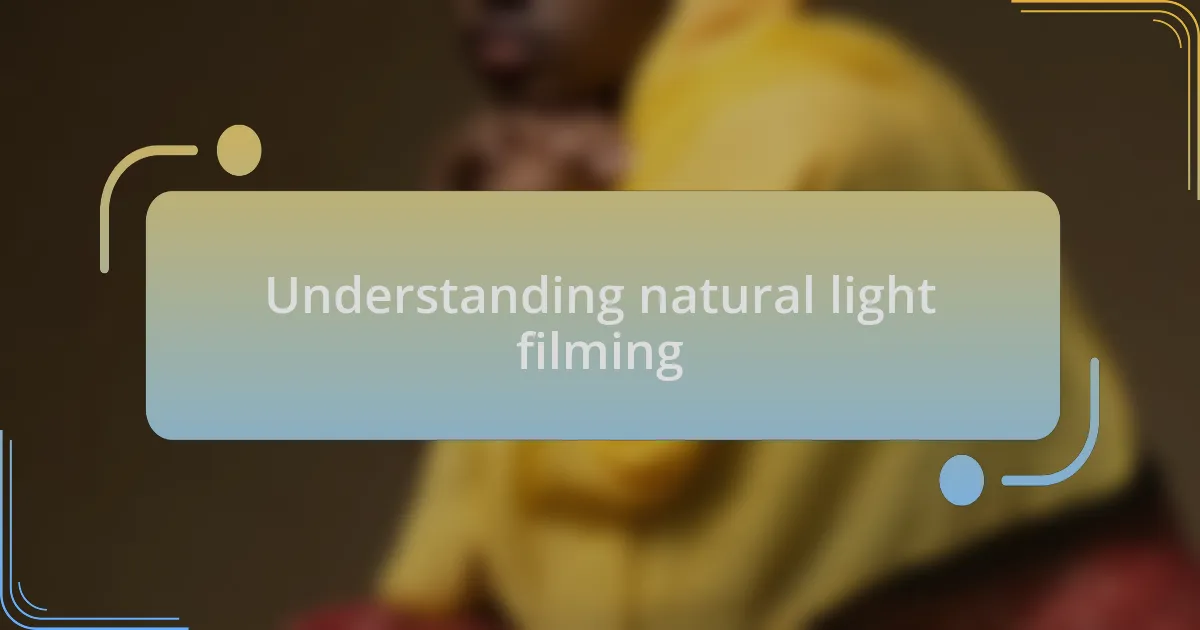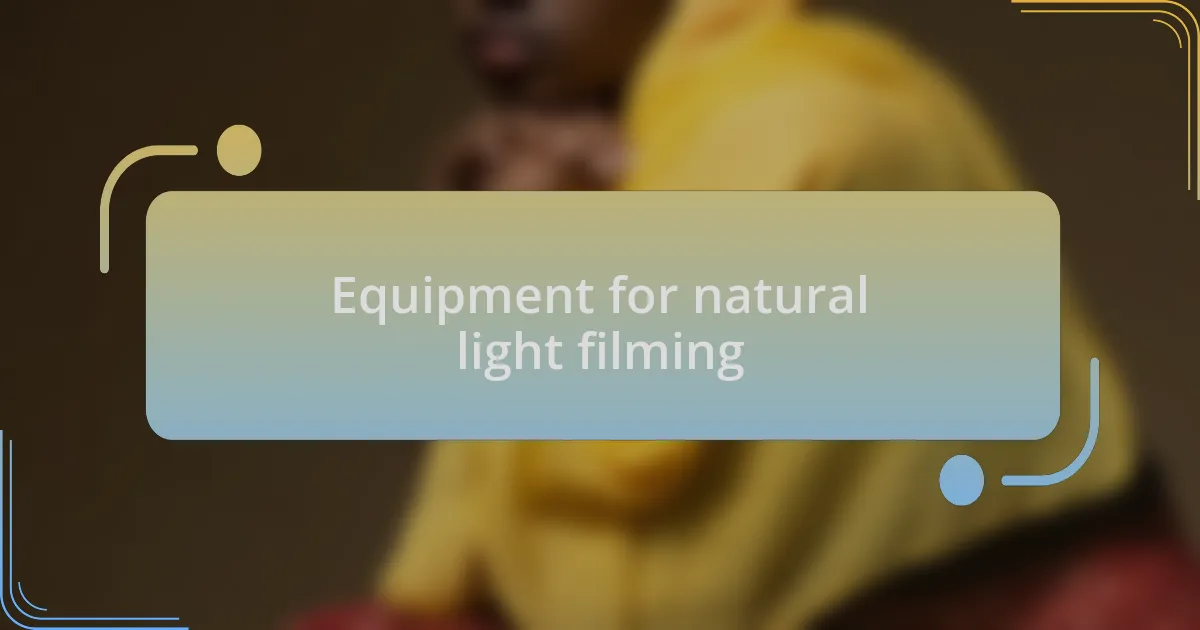Key takeaways:
- Understanding natural light’s changing quality is essential for capturing mood and atmosphere in filmmaking.
- Flexibility and adaptability are crucial skills when working with unpredictable natural lighting conditions.
- A solid camera with low-light capabilities and the use of reflectors can significantly enhance footage shot in natural light.
- Stability provided by a tripod is vital for maintaining focus and clarity in scenes illuminated by natural light.

Understanding natural light filming
Natural light filming is an art that requires an understanding of how sunlight interacts with the environment. I remember one shoot where I underestimated the golden hour; the entire scene transformed in a matter of minutes, bathing the landscape in a warm glow. Have you ever noticed how the quality of light changes throughout the day? It’s mesmerizing and can dramatically alter the mood of your footage.
Working with natural light means embracing its unpredictability. I once faced an overcast day that seemed to dull my vibrant scene, but with some strategic positioning, I captured a soft, diffused light that surprisingly enhanced the atmosphere. This experience taught me that, rather than relying solely on my plan, I had to be flexible and ready to adapt — a crucial skill for any filmmaker.
Harnessing natural light can also evoke powerful emotions in your audience. I recall a moment when shooting a sunrise with just a few actors immersed in dialogue; their expressions illuminated by the soft light created a palpable intimacy. Have you considered how the time of day affects not just the visuals but the emotional tone of your story? It’s truly a dynamic aspect of filmmaking that adds depth and resonance.

Equipment for natural light filming
When it comes to equipment for natural light filming, a solid camera is essential. I often find myself relying on a DSLR or mirrorless camera with good low-light capabilities. The flexibility of changing lenses can also make a world of difference, particularly when I want to capture those fleeting moments of light during dawn or dusk. Have you ever noticed how a wide aperture can create breathtaking bokeh, adding a layer of artistry to your scenes?
In addition to a great camera, I’ve learned the importance of using reflectors. I remember a shoot where I didn’t have a light source handy to fill in shadows on my subject’s face. A simple reflector not only brightened their features but also enhanced the richness of the surrounding colors. It was a pivotal moment that taught me how a lightweight, affordable tool could elevate my work without the need for heavy lighting setups.
Lastly, a sturdy tripod is indispensable for shooting in natural light. On one occasion, I was filming a short documentary about street life. The fluctuating light made handheld shooting tricky, and that’s when my tripod came into play. It allowed me to maintain stability and focus, ultimately capturing scenes that conveyed the vibrancy of everyday life with clarity. Have you thought about how crucial stability can be when you’re trying to mirror the beauty of natural light?